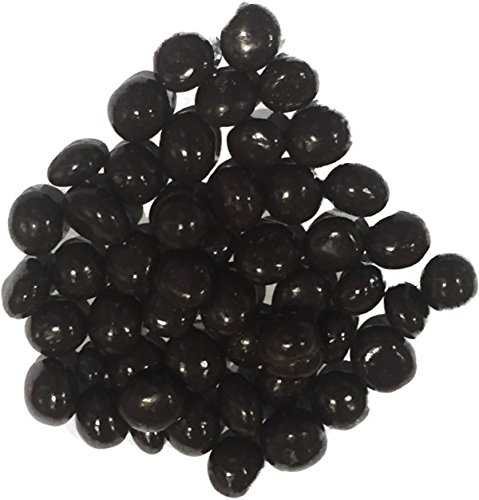How Coffee Bean Altered My Life For The Better

The Benefits and Side Effects of Coffee Beans
Coffee beans are full of health benefits. They can enhance cognitive function and decrease the risk of heart disease. Too many beans can cause anxiety and insomnia.
The taste of coffee can be affected by the soil, the elevation and the cultivation methods. The species of the plant can also affect the taste.

Origin
Coffee beans are the seeds of a tropical evergreen spruce. The beans are roasted then ground into the most loved coffee drink in the world. Coffee is the third most popular drink worldwide and one of the most profitable international commodities. It is known for its invigorating effect, caused by the alkaloid caffeine.
The most commonly accepted tale of coffee's origin tells of an Abyssinian goat herder dubbed Kaldi, who noticed his animals getting lively after eating berries that were cultivated from certain plants. The berries he ate proved to be energizing, and he began cultivating the plant.
In the 16th century, coffee was transported eastwards, eventually reaching the Arabian Peninsula, where it was grown in the Yemeni area. It grew further, and the first coffee houses were opened. medium roast coffee beans of gathering were different from the taverns of Europe and centered on deep discussion and fast-paced thinking.
Today most of the coffee produced in the world comes from two varieties of plant known as Arabica and Robusta. They thrive in the region called the Bean Belt that stretches an area of the planet between the Tropic of Cancer and Capricorn.
Types
There are various kinds of coffee beans and each has a unique flavor profile. The region in which the coffee beans are grown can also affect their flavor. Ethiopian coffee, for example is famous for its citrus and floral notes in the same way, while Colombian beans are known for their full-bodied acidity and an acidity that is balanced.
Coffee beans are harvested from various ways, and some are refined to enhance their flavor. Some beans are dried, roasted, and then ground. Others are frozen and then ground at a later time. They may also be polished to remove the silver skin that covers the bean, which is known as depulping. The beans are then sorted and graded by weight and size and any defects are removed by hand or machines.
Robusta plants are more resistant to pests and can be found at lower altitudes than Arabica plants. They also have higher levels of caffeine than Arabica beans and are used in blends or instants. However increasing numbers of people are enjoying the distinct flavor and high quality of single origin coffees.
Flavor
Coffee beans can be infused with a variety flavors that add a new dimension to desserts, drinks, and food recipes. The type of bean that is suitable for a recipe is determined by the desired flavor profile and how the recipe will be used.
The coffee bean is actually a seed, containing proteins, minerals and lipids as well as pollysaccharides. The seed is covered with silverskin that is removed during roasting. When the seeds are heated they begin a series reactions which produce their aroma, flavor, and color.
Natural coffee flavors are preferred by those who are a bit strict. However, it's also possible to add flavor to roasted coffee beans using manufactured flavors. To enhance the flavor of a batch of beans the roaster sprays beans with a flavored oil. The oil with the flavor is added to the beans until it's evenly distributed. The beans are then chilled, ground and packaged. The flavored beans can be brewed into a cup of coffee or eaten as a snack.
Health benefits
Coffee beans contain caffeine, which is a potent stimulant that can boost energy and improve mood. They also contain phenolic compounds which are antioxidants that protect cells from damage. According to the National Institutes of Health, these compounds are linked to lower risk of cancer and heart disease.
The seeds of a coffee plant are located inside the fruit, which resembles cherries. Usually, the fruit has two seeds that are laid flat against each other. Certain fruits contain only one seed. These are known as peaberries. Peaberries provide a weaker, less flavorful cup of coffee.
Roasting coffee beans changes their flavor making them more pleasing to the taste buds. Roasting coffee beans makes them easier to digest by the body.
The phenolic compounds found in coffee beans are known to inhibit the formation of glucose in the liver, and can lower cholesterol levels in the blood. They are also thought to reduce the likelihood of developing non-alcoholic fatty liver disease and cirrhosis, and could even lower the risk of developing gallstones. Coffee beans are abundant in potassium, riboflavin, B vitamins, and fiber.
Side effects
Coffee seeds are roasted, then made into a popular drink. Coffee consumption is associated with a reduced risk of developing type 2 diabetes and liver diseases. However, the caffeine found in coffee can cause undesirable side effects like jitters, heartburn, and high blood pressure for some people. Green coffee bean extract, a caffeine-free alternative, has been shown to have some of the same benefits but without the negative side effects associated with caffeine.
Coffee beans contain a range of nonvolatile and volatile compounds that protect them from disease, insects and oxidation. These chemicals also enhance their flavor. Nonvolatile compounds form waxy layers on the coffee beans. This coating helps to keep the beans hydrated and prevents insects from eating them.
The fatty acids in coffee beans are converted into energy when the beans are roast. This energy can improve mental performance. It also triggers the release of adrenaline, an hormone that helps prepare the body for physical exercise. In addition the chlorogenic acid found in green coffee beans might reduce fat absorption and slow down the release of sugar through the digestive tract.
